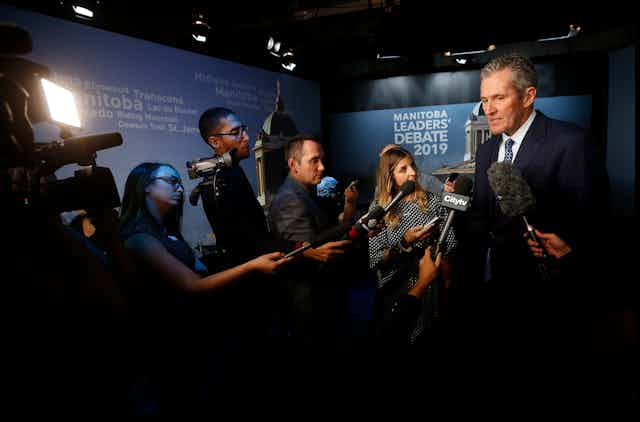Manitobans take full advantage of their summers, if only because they know their winters can be unduly harsh. That’s why urban centres empty out most weekends as people head for cottages. Weekends seem to be made for farmers markets, pow wow celebrations, shady hammocks and sandy beaches. No one wants to think about politics.
Perhaps this is why Progressive Conservative Premier Brian Pallister decided to call an early election. Manitobans head to the polls on Sept. 10, instead of next year.
The premier told reporters he made the decision to make the call early because of the province’s 150 celebrations that will be held in 2020. But the cynics — and there are many — think the premier may have been taking advantage of strong polling numbers and a good economic outlook. The other big reason may be that the health care unions have been distracted by internal issues.
His strategy may work to his advantage.
Health care is the biggest issue in this election, especially in vote-rich Winnipeg where the NDP has traditionally found most of its support. In the last election, Winnipeg is where the Pallister Conservatives made major inroads, winning a historic majority in 2016 including a number of upsets.
Since then, the Pallister government has closed urgent care and emergency rooms in Winnipeg and this has resulted in some layoffs and overtime for nursing and support staff.
Unions were distracted
At the same time, the government moved to force the health care unions to consolidate their bargaining units from 183 down to 50. In June, the provincial commissioner responsible for overseeing that bargaining unit review set the voting period for the new bargaining units to be held from Aug. 8-22. Pallister called the election on Aug. 13. That meant for at least part of the campaign, the unions that had the most at stake in the election were too busy fighting amongst themselves to organize in a fight against the government.
Moreover, money that could be spent on a third-party campaign against the health care cuts imposed by Pallister instead was spent on campaigns designed to lure health care workers to join one union over another.
Pallister heads into this election with a huge majority in the legislature. He won in 2016 with the largest majority in Manitoba history taking 40 of the 57 seats and handing the NDP and scandal-ridden Greg Selinger a firm defeat. Selinger quickly resigned and political neophyte, former broadcaster and hip hop artist Wab Kinew took over the reins.
Kinew came with an inordinate amount of baggage: glossed over criminal convictions that he wasn’t truthful about in his “tell-all” book and allegations of domestic assault. Pallister and the Conservatives have reminded Manitobans of this in commercials both on television and on social media.
One Conservative ad which has had a heavy rotation on television suggests that Kinew’s record would preclude him from many jobs within the province, including nursing, teaching or being a security guard. It asks why Manitobans should trust him as premier.

While Manitoba has largely been a two-party province, with power shared between the NDP and then the Conservatives, there’s hope for the Liberals under Dougald Lamont. The Liberal leader has been impressive in this election race, putting ahead strong policy ideas that — if nothing else — remind Manitobans there is life beyond the traditional party faces.
Liberals could make gains
There are contemplations that the Liberals could enjoy a Sharon Carstairs breakthrough in every election. These refer to the 1988 election in which the Liberals became the official opposition. We’re unlikely to see a repeat this year, but there is a likelihood the party could retain and even build its official party status in the legislature.
Another interesting wrinkle as voting day draws near is that this is the first election following the redrawing of electoral boundaries. All but one of the boundaries have been changed and the city of Winnipeg gained an extra riding as a result.
Political scientist Chris Adams from the University of Manitoba worked with the CBC to analyze the new map, comparing outcomes in the 2011 Manitoba general election to the newly-aligned ridings. Adams determined that, had the 2011 election been conducted with the new seats, the Progressive Conservatives would have won additional seats at the expense of the New Democratic Party. This suggests that the redrawing of these ridings give the Tories an upper hand.
For those of us who are interested in politics, this provincial election has been a nasty one, full of personal rhetoric from both the Tories and the NDP. But for many Manitobans, it’s a summer election. Cottages and good books are more important than political debates and campaign promises.
That may have also been part of the Pallister strategy. Plan an election when no one’s paying attention.

